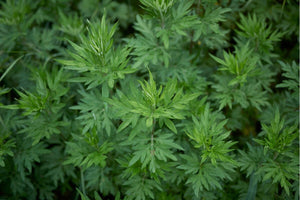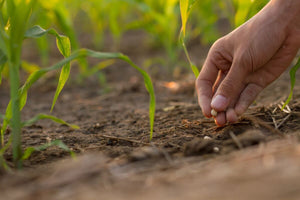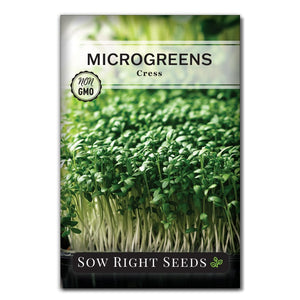Red Cabbage Microgreens: A Surprising Way to Get More Vitamin K
Microgreen growing tipsCabbage microgreens have beautiful green leaves with violet stems. With a tasty cabbage flavor and impressive nutritional profile, these microgreens can be added to any dish. Their color is so much more than just a garnish when added to salads, baked potatoes, grain bowls, and cooked vegetables.

How to Grow Cabbage Microgreens
Cabbage microgreens are easy to grow, full of important vitamins and minerals, and ready to harvest within days!
- Cabbage microgreens do not need to be soaked before sprouting.
- Spread the seeds onto a damp growing medium.
- Moisten the cabbage seeds by spraying them with a water bottle.
- Cover the seeds and keep them away from light for 3 - 4 days.
- This is the blackout period referred to on the seed packet.
- Keep the seeds moist by misting them with water from a spray bottle.
- Maintain an average room temperature.
- Check daily and mist as needed to keep them moist.
- Once the cabbage seeds have sprouted, remove the cover and expose the seedlings to direct light. The light during this growth period is vital for cabbage microgreens. The bright green and vibrant purple colors that develop during the photosynthesis process are why these microgreens are so full of nutrients.
- Continue keeping the seeds moist until they’re ready to harvest.
What are the nutritional benefits of cabbage microgreens?
The nutrition in red cabbage microgreens is amazing!
- Cabbage microgreens beat spinach for having more vitamin K. Why does vitamin K matter? It is what your body needs to help the blood coagulate and to build stronger bones.
- Studies show that red cabbage microgreens have 260x more carotenoids than mature cabbage.
- These little leaves also have 40x the amount of vitamin E.
- And 6x the amount of vitamin C as mature leaves.
- Cabbage microgreens also have higher amounts of lutein than spinach, a vitamin known to help prevent eye diseases.

When and How to Harvest Cabbage Microgreens
In 8-12 days, when cabbage seedlings are about 2 inches tall, they will be ready to harvest. The seed leaves (cotyledons) will be fully grown, and the first set of true leaves will appear. The stems will be red, and the top leaves will be dark green.
Use scissors to cut the cabbage microgreens just above the soil. Then rinse in cool water. Use microgreens immediately or place them in the fridge and consume them within a few days.

Enjoying your fresh cabbage microgreens
Because vitamin K is a fat-soluble vitamin, the body is able to absorb it better when it is eaten with some fat. That's why cabbage microgreens make a great addition to salads with olive oil or sprinkled on some avocado toast.
The mild cabbage flavor and bright colors make them a beautiful garnish on any plate. They can also be added to cooked foods such as omelets and baked potatoes.
There are so many ways to enjoy the healthy benefits of cabbage microgreens that you may want to start a new tray every week to always have a fresh supply. Our 4oz Bulk Package has enough cabbage microgreen seeds for several trays.
At Sow Right Seeds, we love gardening, and we are committed to helping you have a successful growing experience. Our seeds have a high germination rate, and by following the steps in our growing guide, you will reap the benefits of growing fresh, healthy microgreens in your own home.










Leave a comment